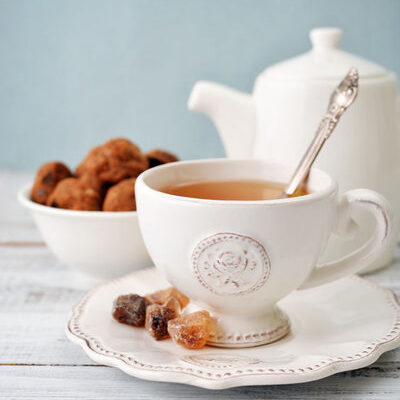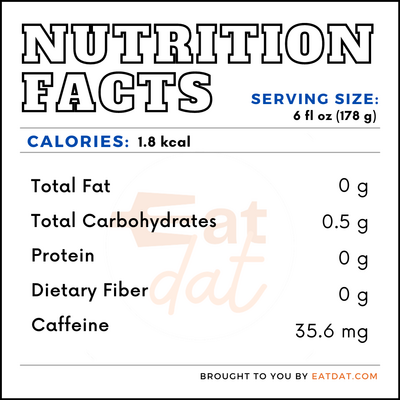
English Tea
What is English Tea?
English tea is a mixture of Assam black tea, Kenyan tea, and Ceylon tea. This tea is also known as English breakfast tea. As it has caffeine, this tea is popularly consumed for breakfast to help maintain energy and activity levels during the day.
- However, in the UK, English breakfast tea is often consumed at various times of the day.
- For the English, afternoon tea is usually enjoyed with finger sandwiches, cakes, scones, macaroons, and other foods.
The top eight most popular brands of this breakfast tea are:
- Twinings of London
- Taylors of Harrogate
- Tazo
- Harney & Sons
- Typhoo
- PG Tips
- Teapigs
- Bigelow
Origin of English breakfast tea
Tea spread from Asia to Europe through the city of Venice. Dutch and Portuguese traders were responsible for shipping tea to Europe in 1610. Thomas Garway was one of the first coffee merchants in those days and later sold tea to the public in the mid-1600s. Tea first appeared in Britain in the mid-1700s and by 1750, it was popular among Britain’s local people. However, the British government wanted to control the tea market and imposed heavy taxation on tea.
King Charles II also gave rules that stopped the sale of tea in private houses. Due to all of these restrictions, locals began to smuggle tea via ships from Holland. Most of the time, smuggled tea was usually costly and adulterated. In 1784, the taxation on tea decreased significantly, which put an end to tea smuggling. Later, a Scottish tea merchant named Robert Drysdale created the tea mix in 1892. Today, this breakfast tea is still popular in the UK and around the world.
Nutrition
A 6 fluid ounce serving of breakfast tea contains:

This hot beverage provides some health benefits, which include:
- This tea is rich in antioxidants, which help to maintain the body’s overall health.
- This drink can improve digestion and body metabolism.
- It can cut down the cortisol level in the body, thereby reducing stress.
- This tea can help to keep you hydrated.
- The caffeine content in this tea makes it suitable for maintaining concentration.
Commercial production
Ceylon tea is the principal component of English breakfast tea. This tea is cultivated using the contour planting method. When the tea leaves are ready for harvest, farmers pluck them by hand. The leaves are then sent to factories for processing and packaging. The processing stage involves rolling, twisting, and oxidizing the leaves.
China is the world’s largest producer of tea. The global tea market reached a value of more than $52 billion in 2018. This value is expected to reach $81 billion by 2026.
Application
English breakfast tea is easy to make using the following steps:
- First, pour clean water inside a kettle and boil it.
- Then, place the tea bag inside the cup.
- Next, once the water is boiling, pour it inside the cup.
- Then, leave the tea to brew for three minutes.
- Remove the teabag from the tea.
- Finally, add milk and sugar to taste.
If you purchase tea bags of this tea, store them in their pack or a plastic container. For loose leaf tea, it’s best to store it in an airtight container. This breakfast tea can last for one to two years if stored under ideal conditions.
English tea recipes
English breakfast tea can be enjoyed in many ways. Here are some popular recipes:
FDA regulation
The Food & Drug Administration has guidelines that describe the recommended quantity of tea consumed per eating occasion, which is 12 fl oz. Tea manufacturers are to convert this reference amount to the label serving size in a household measure. Also, tea brands must comply with labeling guidelines set by the FDA. Some information that should be on a tea brand’s label includes a principal display panel, information panel, identity statement, contents declaration, and the name of the manufacturer.
References
“Tea: Beverage.” True Food Fact, True Food Fact, 2 July 2020, truefoodfact.com/beverage/tea/.
Boesch, Samantha. “What Happens to Your Body If You Drink Tea Every Day.” Eat This Not That, Eat This Not That, 12 Aug. 2020, www.eatthis.com/what-happens-body-drink-tea-every-day/.
Whitehead, Nadia. “High Tea, Afternoon Tea, Elevenses: English Tea Times For Dummies.” NPR, NPR, 30 June 2015, www.npr.org/sections/thesalt/2015/06/30/418660351/high-tea-afternoon-tea-elevenses-english-tea-times-for-dummies?t=1601463269533.
Tess, Schrenger. “How to Make a Cup of English Breakfast Tea.” www.snapguide.com, snap guide blog, 11 Feb. 2019, snapguide.com/guides/make-a-cup-of-english-breakfast-tea/.
First, Jo. “The Most Important Thing to Know About Storing Tea.” www.thekitchn.com, Apartment Therapy, LLC., 1 May 2019, https://www.thekitchn.com/the-most-important-thing-to-know-about-storing-tea-231350
